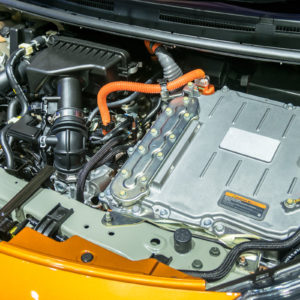Are you familiar with the road signage that says “slower traffic use turnouts”? These signs are usually found on two-way highways and other tight roads, giving drivers time to consider using an upcoming turnout area.
What Is a Turnout Area?
A turnout area or turnout lane is a special area on the side of the road that drivers can enter to allow other cars to overtake them. Turnout areas are usually seen on winding roads, mountain roads, and other roads that don’t have enough space for passing lanes.
Passing Lanes vs. Turnout Areas: What’s the Difference?
While turnout areas are meant for drivers who want to slow down, passing lanes are made for those who want to overtake slower-moving lanes.
A passing lane or overtaking lane is usually the leftmost lane of a highway or multi-lane road. It lets you overtake vehicles that are slower than you.
This lane improves traffic management, enabling those who are in a hurry to reach their destination safely.
When to Use Turnout Areas

The laws regarding turnout areas can vary depending on which state you’re in.
For example, in California, you have to use a turnout lane if you are driving at a low speed in an area where passing is unsafe and five or more vehicles are behind you.
If you’re a rookie driver, make sure to check the traffic laws that apply in your area.
How to Use Turnout Areas
If you notice a line of faster-moving vehicles behind you and you’d rather maintain your steady speed instead of matching their pace, consider using a turnout area when it’s available.
Here are some steps you can follow to use turnout areas safely:
Look for the Next Turnout Area
Watch for signs that say “turnout” or “slow traffic use turnouts.”
Signal Your Intent to Pullover
Use your turn signal as you approach the turnout area. Don’t forget to check your mirrors and blind spots to make sure you’re changing lanes safely.
Move to the Turnout Lane
When it’s safe, slowly drive your vehicle into the turnout area. Make sure no part of your vehicle is occupying the main roadway.
Once in place, you can stop or slow down to allow faster vehicles to pass.
Merge Back Onto the Main Road
Use your turn signals and be careful. Don’t drive hastily, and watch for oncoming traffic as you return to the main road.
Can I Use a Turnout Area to Make a U-turn or Turn Around?
Some drivers use turnouts to turn around, but, it’s not recommended. These areas help manage traffic and allow short-term stops. Using them for turning around can disrupt the flow of traffic and put you in danger while on the road.
If you really need to make a U-turn, look for an area where U-turns are permitted. Intersections, for instance, usually have designated U-turn lanes. You can also look for roundabouts and other safe turning points.

Can I Use a Turnout Area to Pull Over and Sleep?
It depends on the local traffic laws, but generally, turnout areas are only meant for brief stops to let traffic pass. If you pull over for a long period, you could disrupt the flow of traffic.
Unless it’s an emergency, don’t stop at a turnout area for a long time. If you really need to sleep or feel that you’re too exhausted to drive, look for safe rest stops, campgrounds, or hotels.
Other Special Lanes Every Driver Should Know About
Here are other lanes you should know as a driver:
High Occupancy Vehicle (HOV) Lanes
These lanes are reserved for vehicles with multiple occupants like cars, multi-purpose vehicles, and buses.
It’s important to note that if you’re driving your car without passengers, you cannot use this lane. Also, depending on the local laws, these lanes might also be open to motorcycles and electric-powered (or hybrid) vehicles.
The goal of an HOV lane is to provide an incentive to those who use ridesharing and public transportation, helping alleviate road congestion and improving overall traffic operations.
Reversible Lanes
Reversible lanes can be found on busy roads across the US. They’re commonly seen in bridges and tunnels.
In reversible lanes, traffic can flow in one direction during a time of the day, and then switch to another direction later in the day. The change helps manage heavy traffic, so it depends on the traffic demands at particular periods.
Overhead signs or electronic message boards are usually placed above the reversible lane to inform the drivers about the current direction of the lane. Pay attention to the signs on the road to ensure you’re traveling in the correct direction.
Bike Lanes
Bike lanes, as the name suggests, are made specifically for cyclists. They’re usually marked using painted lines or symbols on the pavement.
The lane can also have stencil markings of bicycles at intervals to indicate that it’s designated for bikes. Bike lanes enable cyclists to travel at their desired speed safely.
Any information provided on this Website is for informational purposes only and is not intended to replace consultation with a professional mechanic. The accuracy and timeliness of the information may change from the time of publication.















